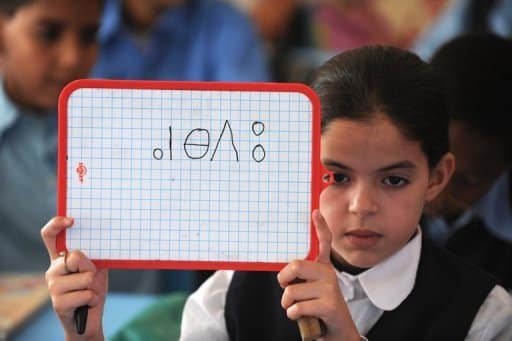
In North Africa, Tamazgha, there are al-ready three Amazigh languages that are extinct: the Judeo-Berber and the Tamazight of Ait Rouadi in Morocco, as well as the Sened in Tunisia. According to linguists, when a language disappears it is gone forever, even if we try to re-habilitate it, because a language is much more than a means of communication, it is also a way of life. In other words, as of now, many Amazigh communities have already lost an important legacy of their culture and we have no words to describe the situation of those among us who have lost their mother tongue forever.
According to a report that was conducted by a group of Amazigh scholars, there are seventeen Amazigh languages in a critical or seriously endangered situation such as Zenaga in Western Sahara, Zenaga and Nemadi in Maurita-nia, Tetserret in Niger, Senha.a in Srair, Morocco, Tamazight in Tunisia, Nefousi and Sawkna in Libya, Awjila in Egypt, as well as Korandje, Taznatit, Tidikelt, Tagargrent, Touggourt, Tasnusit, Tamazight of Arzew and Zenatiya in Algeria.
That’s not all, there are two endangered languages; Tamazight of Beni Iznassen in Morocco and the Tamahaq in Libya and, six languages are in a vulnerable situation; Tamazight of Figuig in Morocco, Ghadames in Libya and Tamahaq, Tamzabit, Tay-urayt, Tacenwit in Algeria.
The ugly truth about this report is that out of thirty-two languages in North Africa Tamazgha, there are only four that are not in danger of disappearing (or safe): Tacelhit and Tariffit in Morocco as well as Taqbaylit and Tacawit in Algeria.
This could be due to a number of factors including the geographical region which is located at a strategic location that have been the target of countless invaders, and due also of schizophrenic North African States and Governments that have worked to eradicate our languages. but in spite of all of this, we have somehow resisted and managed to save some of our language heritage.
This diagram shows the degree level of endangerment of Amazigh languages across North Africa using UNESCO’s Language Vitality and Endangerment scale;

Safe: Language is spoken by all generations, intergenera-tional transmission is uninterrupted. These languages are not included in the Atlas of Endangered Languages.
Vulnerable: Most children speak the language, but it may be restricted to certain areas (for example: at home and often children use this language just to communicate with their parents).
Endangered: Children no longer learn the language as their mother tongue at home. Children do not speak the language, although sometimes they understand it.
Seriously in danger: The language is spoken by the grand-parents; while the generation of parents can understand it, they do not talk to each other or to their children.
In a critical situation: The youngest speakers are grand-parents and their ascendants, and they speak only partially and infrequently.
Extinct: There are no more speakers left. The Atlas contains the references of lan-guages extinct since the 1950s. These are languages that have disappeared recently.
Today, it is no longer a question of resisting, but of building and reconstructing our languages, and why not a language with several variants, according to linguists, it is one of the conditions for the sustainability and durability of a language. Besides, the more words a language contains, the richer it is, is not it?
[ads2]















